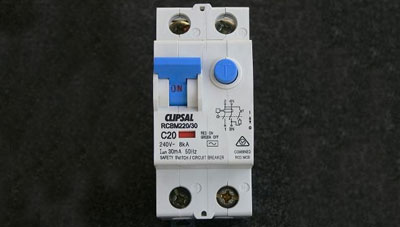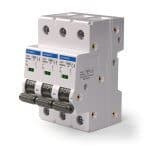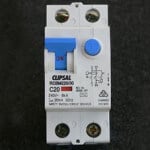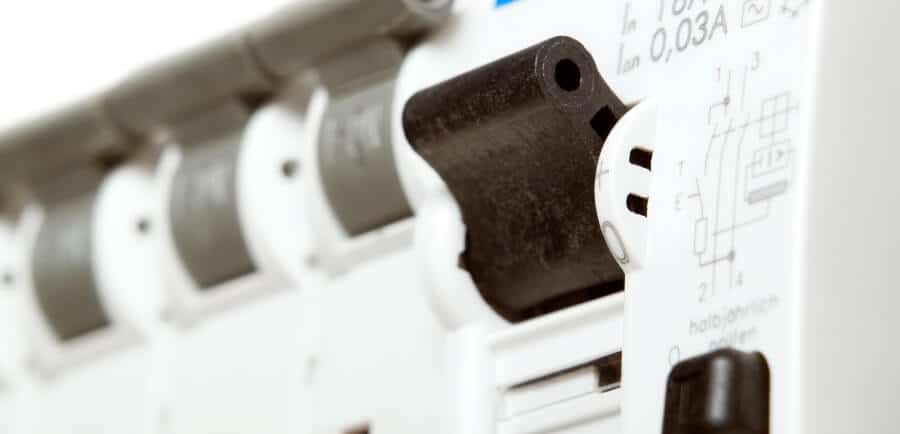What you need to know about Safety Switches
Safety switches are there to save lives. They trip in 0.03 of a second when a problem occurs. For more information about how they work and your requirements to install them, read on...
But first...
An electrical safety switch protects you and your family from electrocution.
If an electrical fault occurs within an appliance or in a power or lighting circuit, a safety switch will turn the power supply off in a fraction of a second and prevent electrocution.
All new homes must have an electrical safety switch installed on all power and light circuits.
Older homes are required to have an electrical safety switch installed when any modification is made to the existing electrical layout although it is highly recommended you have a safety switch installed prior to this requirement.
A switchboard-mounted electrical safety switch will protect your whole home. A Power Outlet electrical safety switch provides protection to a limited area in your home, usually a single circuit. These must be installed by a qualified electrician
FAQs On Electrical Safety Switches
Many people have a safety switch and think that one is enough. You should have a safety switch installed for each electrical circuit in your house. For instance, you’ll need a safety switch for your pool, air-conditioner, lights, power sockets, and hot water system. What this means in effect, it larger homes (for instance) may have two circuits and therefore require two safety switches. Your shed may be on a second circuit. Etc. Each circuit should be protected by a safety switch.
The video below by the Queensland Government explains that you need one safety switch on each circuit of your home.
This is a common question. Safety switches and circuit breakers look similar. To state it broadly, circuit breakers are there to safeguard your electrical system from overload. Whereas the safety switch is there to safeguard you and your family. A circuit breaker will trip when there is an overload, thus protecting the wiring and the appliances. If you were to touch a live wire, that does not overload the circuit. It does the opposite. You earth the circuit through your body. (And that’s what kills you.) A circuit breaker will not protect you in this instance. A safety switch will.
Electrical safety switches have a button with a T on them. If it doesn’t have a face with a T on it then what you’re looking at is probably a circuit breaker. Circuit breakers are different from safety switches and do not offer the protection your family needs. See the photo below of a safety switch. It as the blue button to the right with a T embossed on it. 
The Queensland Government has a longstanding commitment to increase electrical safety in the community by requiring the installation of safety switches in domestic premises.
All new homes built or extended after 1992 but before 2000
Safety switches have been compulsory on all new homes in Queensland since 1992. Safety switches must also be fitted to all power point circuits when a new electrical installations occurs, such as a general power outlet (GPO).
All new homes built or extended after 2000
Safety switches have been compulsory on all power point and lighting circuits for new Queensland homes built since 2000, following the change in Wiring Rules.
Homes which have had the electrical installation extended to include additional lighting and power point circuits are required to have safety switch protection on both lighting and power point circuits.
Buying a property
If you buy a property without a safety switch, you must install a safety switch for the power point circuits within three months of a property transfer. This applies to any transfer of domestic premises.
Selling a property
If you sell a property, you first establish if a safety switch is installed for power point circuits, which must be declared on the standard sales contract and Form 24 Property Transfer.
Renting a home
A landlord renting out a home must ensure a safety switch has been installed for the power points within six months of the tenancy agreement, if there is not a safety switch already present.
In order to make sure your safety switch is working properly, you should test it every 3 months.
It’s a simple process. Press the button with the T on it. The safety switch should immediately flick off. The circuit is now off. All appliances and lighting on that circuit will be off.
Testing Your Safety Switch
The video below, provided by the Queensland Government, provides a great description of testing your safety switches. It’s important to test your safety switches every three months.
Your Requirements For Safety Switches In Queensland
All new homes built or extended after 1992 but before 2000
Safety switches have been compulsory on all new homes in Queensland since 1992. Safety switches must also be fitted to all power point circuits when a new electrical installations occurs, such as a general power outlet (GPO).
All new homes built or extended after 2000
Safety switches have been compulsory on all power point and lighting circuits for new Queensland homes built since 2000, following the change in Wiring Rules.
Homes which have had the electrical installation extended to include additional lighting and power point circuits are required to have safety switch protection on both lighting and power point circuits.
Buying a property
If you buy a property without a safety switch, you must install a safety switch for the power point circuits within three months of a property transfer. This applies to any transfer of domestic premises.
Selling a property
If you sell a property, you first establish if a safety switch is installed for power point circuits, which must be declared on the standard sales contract and Form 24 Property Transfer.
Renting a home
A landlord renting out a home must ensure a safety switch has been installed for the power points within six months of the tenancy agreement, if there is not a safety switch already present. You can test your electrical safety switches by pressing the button marked T (for Test). The switch should immediately flick off. Now inspect your home and make sure the circuit is turned off. For instance, if you have tested your lights then the the lights should now be off. If neither of these events happen please contact us immediately.
See Our Electrical Services For Home Renovators and Property Maintenance
Electrical Property Services
Home Renovation Electrician










